Acoustic sensors enable efficient and non-invasive monitoring of a wide range of species, including many that are difficult to monitor in other ways. Although they were initially limited in application scope largely due to cost and hardware constraints, the development of low-cost, open-source models like the Audiomoth in recent years has increased access immensely and opened up new avenues of research. For example, some teams are using them to identify illicit human activities through the detection of associated sounds, like gunshots, vehicles, or chainsaws (e.g. OpenEars).
With this relatively novel dimension of wildlife monitoring rapidly advancing in both marine and terrestrial systems, it is crucial that we identify and share information about the utility and constraints of these sensors to inform efforts. A recent study identified advancements in hardware and machine learning applications, as well as early development of acoustic biodiversity indicators, as factors facilitating progress in the field. In terms of limitations, the authors highlight insufficient reference sound libraries, a lack of open-source audio processing tools, and a need for standardization of survey and analysis protocols. They also stress the importance of collaboration in moving forward, which is precisely what this group will aim to facilitate.
If you're new to acoustic monitoring and want to get up to speed on the basics, check out these beginner's resources and conversations from across the WILDLABS platform:
Three Resources for Beginners:
- Listening to Nature: The Emerging Field of Bioacoustics, Adam Welz
- Ecoacoustics and Biodiversity Monitoring, RSEC Journal
- Monitoring Ecosystems through Sound: The Present and Future of Passive Acoustics, Ella Browning and Rory Gibb
Three Forum Threads for Beginners:
- AudioMoth user guide | Tessa Rhinehart
- Audiomoth and Natterjack Monitoring (UK) | Stuart Newson
- Help with analysing bat recordings from Audiomoth | Carlos Abrahams
Three Tutorials for Beginners:
- "How do I perform automated recordings of bird assemblages?" | Carlos Abrahams, Tech Tutors
- "How do I scale up acoustic surveys with Audiomoths and automated processing?" | Tessa Rhinehart, Tech Tutors
- Acoustic Monitoring | David Watson, Ruby Lee, Andy Hill, and Dimitri Ponirakis, Virtual Meetups
Want to know more about acoustic monitoring and learn from experts in the WILDLABS community? Jump into the discussion in our Acoustic Monitoring group!
Header image: Carly Batist
I am the executive director of FishEye Collaborative, a non-profit developing underwater bioacoustic technologies and methods to grow our understanding of marine ecosystems.
- 0 Resources
- 0 Discussions
- 6 Groups
- 0 Resources
- 0 Discussions
- 6 Groups
- 0 Resources
- 0 Discussions
- 1 Groups
EcoFirst
Biologist and naturalist involved in NGO's activities as well as profesionnally
- 0 Resources
- 1 Discussions
- 3 Groups
- 0 Resources
- 5 Discussions
- 8 Groups
- @AudreyLooby
- | she/her
University of Victoria
I am Banting postdoctoral fellow at the University of Victoria, focusing on coastal soundscape ecology and underwater noise pollution. I am also one of the co-leads of FishSounds.net.


- 1 Resources
- 5 Discussions
- 5 Groups
- @mdorigo
- | she/her
- 0 Resources
- 0 Discussions
- 3 Groups
- @stefan_istrate
- | he/him
Machine Learning Researcher & Nature Photographer. Building conservation tech for biodiversity monitoring at Wildlife Insights.


- 0 Resources
- 5 Discussions
- 9 Groups
Society for Conservation GIS


- 0 Resources
- 25 Discussions
- 5 Groups
Department of Conservation (New Zealand)
I work with the Terrestrial Biodiversity Team at the Department of Conservation, New Zealand. I'm interested in machine learning and spatial data science.
wekaResearch.com | doc.govt.nz

- 0 Resources
- 9 Discussions
- 4 Groups
GreenLab


- 0 Resources
- 20 Discussions
- 8 Groups
World Wide Fund for Nature/ World Wildlife Fund (WWF)
WWF-Tanzania GIS Specialist/Developer/Trainer
- 0 Resources
- 1 Discussions
- 7 Groups
HawkEars is a deep learning model designed specifically to recognize the calls of 328 Canadian bird species and 13 amphibians.
13 May 2025
The Biological Recording Company's ecoTECH YouTube playlist has a focus on webinars about Bioacoustic monitoring.
29 April 2025
This paper includes, in its supplementary materials, a helpful table comparing several acoustic recorders used in terrestrial environments, along with associated audio and metadata information.
15 April 2025
Conservation International is proud to announce the launch of the Nature Tech for Biodiversity Sector Map, developed in partnership with the Nature Tech Collective!
1 April 2025
PhD position available at the University of Konstanz in the Active Sensing Collective Group!
28 March 2025
InsectSet459 - the first large-scale open dataset of insect sounds, featuring 26,399 audio clips from 459 species of Orthoptera and Cicadidae.
24 March 2025
Naturalis is looking for a postdoc in AI for Ultrasonic Bioacoustic Monitoring
24 March 2025
Postdoctoral opening in the Bioacoustics and Behavioral Ecology Lab at Syracuse University
14 March 2025
Funding
Species identification from audio, focused on birds, amphibians, mammals and insects from the Middle Magdalena Valley of Colombia.
12 March 2025
Building species-specific habitat models for forest bird species using state of the art methods and remote sensing layers
28 February 2025
Osa Conservation is launching our inaugural cohort of the ‘Susan Wojcicki Research Fellowship’ for 2025, worth up to $15,000 per awardee (award value dependent on project length and number of awards given each year)....
10 February 2025
workshop introduced participants to the power of bioinformatics and next-generation sequencing (NGS) in conservation biology.
10 February 2025
June 2025
July 2025
September 2025
event
October 2025
November 2025
event
September 2024
event
event
61 Products
| Description | Activity | Replies | Groups | Updated |
|---|---|---|---|---|
| Hi Mona. Yes, this is what we certainly what we are considering, but how to measure these indices by the hands of non-experts in the field is the advice that I need from the WL... |
|
Acoustics | 23 hours 50 minutes ago | |
| Would that be able to process locally stored acoustic data? One of the great things about birdnet analyzer is that it is local - it doesn't require uploading terabytes... |
|
Acoustics | 3 days 14 hours ago | |
| Do you collect or use sound recordings of habitats or species like birds, frogs, mammals, or insects in India? We need your expertise!... |
|
Acoustics | 1 week 1 day ago | |
| My name is Frank Short and I am a PhD Candidate at Boston University in Biological Anthropology. I am currently doing fieldwork in Indonesia using machine-learning powered passive... |
|
Acoustics, AI for Conservation, Animal Movement, Data management and processing tools, Early Career, Emerging Tech, Ethics of Conservation Tech, Protected Area Management Tools, Software Development | 2 weeks ago | |
|
|
Latin America Community, Acoustics, AI for Conservation, Camera Traps, Drones, Early Career | 2 weeks 5 days ago | ||
| There are a lot of parameters in principle here. The size of the battery. How much time in the field is acceptable before a visit? Once a week? Once a month? How many devices you... |
|
Acoustics | 3 weeks ago | |
| Hi Tom! I think the furry windjammer must be outside the casing to have the desired effect. It can be a bit tricky having this nice furry material that birds and other critters... |
|
Acoustics | 3 weeks 2 days ago | |
| Hi Lana,"similar field setup" means that the vocalizing animal should be surrounded by the recorders and you should have at least 4 audiomoths recording the same sound, then the... |
+9
|
Acoustics | 3 weeks 2 days ago | |
| Fantastic! Can't wait to hear updates. |
|
Acoustics | 4 weeks ago | |
| New stable release : v1.5.1We are pleased to announce the latest release with several important enhancement, fixes and documentation improvements to ensure compatibility with the... |
+15
|
Acoustics, AI for Conservation, Open Source Solutions, Software Development | 1 month 1 week ago | |
| Hello everyone,Thank you all for your contribution!You can read some updates about this project in this post.Julia |
|
Acoustics, Community Base, Data management and processing tools, Open Source Solutions | 1 month 2 weeks ago | |
| Hi Ryan, hmm, I had no idea there was a microphone named that. I thought about how it’s used to lure birds for netting, and I like Greek Mythology. I thought it was a perfect fit... |
|
Acoustics, Emerging Tech, Funding and Finance, Protected Area Management Tools, Software Development | 1 month 2 weeks ago |
Hiring bioacoutics analysts
19 January 2024 4:18am
Two year postdoc - Machine Learning & Bioacoustics
16 January 2024 7:49am
Cold-Weather Soundscapes
Listening to nature how sound can help us understand environmental change
9 January 2024 6:33pm
Looking for a Supervisor/Research Group - ML-driven Marine Biomonitoring
3 January 2024 2:05pm
7 January 2024 6:06pm
Thanks Aude, very useful. Will reach out to them!
Gunshot detection technology deployed
7 January 2024 5:41pm
The sound maps that predict poachers' movements
7 January 2024 5:33pm
Bird Acoustic Surveys: Comparison with traditional transect methods
6 November 2023 9:32am
4 December 2023 11:36am
Hi Theresa. In comparison to traditional survey, I think that the time/cost benefits of acoustics are good. Certainly the set-up, maintenance, and data management requirements are minimal. And if there is significant travel time to site, and the recording period of acoustic survey is long, then I think the benefits are compounded (i.e. there are economies of scale to acoustics that you don't get with trad surveys).
Until the last year or two, the data analysis for species identification has been the time-consuming part. However, now that systems such as BirdNET are available, this issue is fairly well dealt with (but still needs a little bit of skill/experience).
A couple of scientific papers have assessed these costs/benefits - I hope these make an interesting read.
Carlos
The Use of Automated Bioacoustic Recorders to Replace Human Wildlife Surveys: An Example Using Nightjars | PLOS One
To be able to monitor and protect endangered species, we need accurate information on their numbers and where they live. Survey methods using automated bioacoustic recorders offer significant promise, especially for species whose behaviour or ecology reduces their detectability during traditional surveys, such as the European nightjar. In this study we examined the utility of automated bioacoustic recorders and the associated classification software as a way to survey for wildlife, using the nightjar as an example. We compared traditional human surveys with results obtained from bioacoustic recorders. When we compared these two methods using the recordings made at the same time as the human surveys, we found that recorders were better at detecting nightjars. However, in practice fieldworkers are likely to deploy recorders for extended periods to make best use of them. Our comparison of this practical approach with human surveys revealed that recorders were significantly better at detecting nightjars than human surveyors: recorders detected nightjars during 19 of 22 survey periods, while surveyors detected nightjars on only six of these occasions. In addition, there was no correlation between the amount of vocalisation captured by the acoustic recorders and the abundance of nightjars as recorded by human surveyors. The data obtained from the recorders revealed that nightjars were most active just before dawn and just after dusk, and least active during the middle of the night. As a result, we found that recording at both dusk and dawn or only at dawn would give reasonably high levels of detection while significantly reducing recording time, preserving battery life. Our analyses suggest that automated bioacoustic recorders could increase the detection of other species, particularly those that are known to be difficult to detect using traditional survey methods. The accuracy of detection is especially important when the data are used to inform conservation.
2 January 2024 3:28pm
Thanks for taking the time to respond and share these articles!
3 January 2024 4:55pm
A very nice read, especially for me someone new to the field as myself. Nice to see all of the various approaches and to know I wasn't re-inventing the wheel but adding something new (Potential new platform for real time localization).
Looks like my timing wasn't ideal to be included in your summary. Maybe for version #2 :)
GitHub - hcfman/sbts-aru: Low cost Raspberry Pi sound localizing portable Autonomous Recording Unit (ARU)
Low cost Raspberry Pi sound localizing portable Autonomous Recording Unit (ARU) - hcfman/sbts-aru
Thanks for sharing!
Practical sound localization on the Raspberry Pi
17 December 2023 5:31pm
18 December 2023 11:24pm
Worth a read? The synopsis sounded very star trek like.
21 December 2023 6:22am
Probably not unless you are old enough to be nostalgic. I don’t think that’s you Brett 😀
31 December 2023 10:55am
Cool! My Sound Localization project has hit hackaday. The use case of fireworks localization was pure sensationalism.
Hydromoth for coastal & offshore surveying
16 November 2023 7:36am
18 November 2023 1:47am
Hi Sol,
I think your concern is well placed. The pros typically tow an array of hydrophones, in its simpler configuration it looks like a long fat rubber hose containing maybe a dozen transducers feeding their electrical signals to a recording unit back on the ship. All this is done to reduce noise from the ship, from waves crashing, and flow noise. The multiple transducers can also be electronically tuned to be directional so that it can be "pointed" away from a noise source (like the ship).
In your position, I would just try the simplest thing that could work, then fix the problems as they arise. It could be you may need to be dead in the water while recording. To address surface noise (slapping waves, wind), you could mount the hydromoth low down on a spar buoy, which you tow into position.
Best of luck, it sounds like an interesting project (c:
19 December 2023 2:20pm
Hydromoths are great for the price but they do not have the most streamlined housing and audio quality won't be as good as something like a SoundTrap or really any recorder with a proper hydrophone and 16-bit +DAQ system.
If you can afford it, this is an excellent SoundTrap based towed autonomous system NOAA have been using. It might work towed behind an autonomous vehicle
Alternatively, if you can have something inside the vehicle, a simple tape recorder (e.g. Tascam DR40X) and hydrophone on cable will provide excellent sound quality. You could also use something like a Raspberry Pi with audio focussed ADC hat to record but that would require a bit more programming. Even consider a standard AudioMoth and plug a proper hydrophone into the audio jack - this would still have a 12-bit ADC but would provide better sound quality than a hydromoth (hydrophones are more omnidirectional and there's no air filled causing reflections and attenuation)
20 December 2023 6:57am
If you are considering an external microphone and a towed system, then you would also be in a position to consider a raspberry pi with an external microphone with sbts-aru. Another option:
GitHub - hcfman/sbts-aru: Low cost Raspberry Pi sound localizing portable Autonomous Recording Unit (ARU)
Low cost Raspberry Pi sound localizing portable Autonomous Recording Unit (ARU) - hcfman/sbts-aru
New Raspberry Pi Sound Localizing ARU is now fully released and ready for use
7 October 2023 2:10pm
18 December 2023 3:42pm
Hi @chrisgnicholas ! AudioMoth has a pipeline for exactly that:
Application-Notes/Using_AudioMoth_GPS_Sync_to_Make_Synchronised_Recordings at master · OpenAcousticDevices/Application-Notes · GitHub
Papers relating to work carried out by Open Acoustic Devices. - Application-Notes/Using_AudioMoth_GPS_Sync_to_Make_Synchronised_Recordings at master · OpenAcousticDevices/Application-Notes
Cheers,
Lars
18 December 2023 7:06pm
Very cool, real-time audio pattern matching is exactly what I meant! I'd love to hear updates as it goes.
18 December 2023 7:29pm
When I designed the recorder. I chose it to use jackd2 instead of pulse audio or direct alsa access because unless I was mistaken it could support multiple consumers of the sound source and the other approaches not.
Originally its purpose was part of my security system so it records as well as being able to connect and listen live. That’s simply a case of also installing icecast2 and darkice onto the same system. Then I discovered bio-acoustics and pivoted and then discovered wildlabs 😀
In principle you could both those things as well as real time audio pattern matching no problem.
Which market-available microphones, accelerometers and GIS sensors for dogs / pets ?
7 September 2023 3:21pm
6 December 2023 2:03pm
good to know that GPS coordinates can be used to sync the time.
Does GPS resolution allow to a desired time resolution (e.g. seconds) ? Does choice of time resolution significantly depends on the physiology of the animal (e.g. time of re-action to stimuli, hence less than a second) or for most animal communication and animal behaviour is it enough above a second?
7 December 2023 7:03am
Hi Luigi!
It is not the coordinates but the information from the "pulse per second" from the GPS which is used for the time sync.
Have a look at
17 December 2023 3:02pm
I am not an acoustics person but train and deploy canines in the field. Are you looking for something that records sniff rate and patterns? For GPS I just use a Garmin collar system Altha 100. There is a Conservation Canine group that might be worth asking your question in.
Call for Interview Subjects: Conservation Bioacoustics Methods
14 December 2023 8:47pm
15 December 2023 12:19pm
Happy to help Samuel, will send a message
15 December 2023 3:46pm
I'd love to!
16 December 2023 9:43am
Thank you Stefan! Will follow up with your email shortly.
Low-cost hydrophone - Invitation to tender
15 December 2023 9:28pm
Sustainable land managment
15 December 2023 3:38pm
Geospatial data training and education for conservation
15 December 2023 3:20pm
Conservation of Kikuyu Escarpment Forest
1 December 2023 12:38pm
Deploying Song Meters in Nigeria
24 November 2023 9:01am
28 November 2023 3:08pm
Hi Joan,
Sounds like a great project! I would recommend having a look at some of the nice review literature and guidelines that are out there, like -
- https://www.researchgate.net/publication/368683386_Good_practice_guidelines_for_long-term_ecoacoustic_monitoring_in_the_UK
- https://academic.oup.com/bioscience/article/69/1/15/5193506 (Terrestrial Passive Acoustic Monitoring: Review and Perspectives)
- https://zslpublications.onlinelibrary.wiley.com/doi/full/10.1002/rse2.227 (Optimizing tropical forest bird surveys using passive acoustic monitoring and high temporal resolution sampling)
- https://onlinelibrary.wiley.com/doi/full/10.1111/brv.12890 (Acoustic indices as proxies for biodiversity: a meta-analysis)
- https://besjournals.onlinelibrary.wiley.com/doi/full/10.1111/2041-210X.14194 (Using acoustic indices in ecology: Guidance on study design, analyses and interpretation)
And some specific to nocturnal birds:
- https://pdfs.semanticscholar.org/f720/4b65248c2d9335dc0b70d1ac3b748145398e.pdf (In the still of the night: revisiting Eastern Whip-poor-will surveys with passive acoustic monitoring)
- https://link.springer.com/article/10.1007/s10531-023-02642-7 (Passive acoustic monitoring in difficult terrains: the case of the Principe Scops-Owl)
- https://www.tandfonline.com/doi/abs/10.1080/01650521.2021.1933699 (Passive acoustic monitoring of the Ferruginous Pygmy-Owl (Glaucidium brasilianum) over a complete annual cycle: seasonality and monitoring recommendations)
- https://www.biorxiv.org/content/10.1101/2023.05.22.541336v1.abstract (Nighthawk: acoustic monitoring of nocturnal bird migration in the Americas)
And a study on bird acoustic monitoring in Nigeria:
- https://www.sciencedirect.com/science/article/pii/S1470160X20312115 (Passive acoustic monitoring gives new insight into year-round duetting behaviour of a tropical songbird)
In terms of processing and analyzing the data, I work for Rainforest Connection which maintains Arbimon - a free, no-code ecoacoustic analysis platform to help automate species detection and classification within soundscapes. If you're interested, you can get started with our support docs!
There are also a number of stats packages for analyzing soundscape data (seewave, monitoR, warbleR in R; and OpenSoundscape, scikit-maad in Python).
AWMS Conference 2023
Flying with li-ion batteries
15 November 2023 8:24pm
16 November 2023 2:26am
The 18650s should be packed in discrete holders to separate them and prevent them from shorting. I've taken up to 50 on a plane before. 100 might be a tall ask since most planes have limitations on total Amp Hours you can bring.
Good luck.
16 November 2023 4:01pm
Thanks Akiba, good to know you had no problems with those, and those cases look good. Having read a bit more, it actually seems that in theory there is no limit to the number of batteries you can bring, as long as each is <100Wh. Seems like I'll be testing that theory...
PhD Opportunity - Marine Bioacoustics and Behaviour Lab
16 November 2023 2:13pm
PhD Opportunity - Real-time acoustic monitoring of insect pollinators and their behaviours
16 November 2023 12:48pm
Software Engineer at Rainforest Connection & Arbimon
14 November 2023 12:30am
Seeking AudioMoth in SF Bay Area
6 November 2023 8:48pm
7 November 2023 9:10pm
I have an AudioMoth that they are welcome to. I'm down in Moss Beach (just north of Half Moon Bay).
8 November 2023 10:28pm
You're awesome Tim, thank you! However, we ordered another from GroupGets yesterday and it's arriving tomorrow, so we (should) be good to go : ) Now if I can only get LabMaker to reimburse me for the one that didn't arrive, that would fix everything. Unfortunately they've been incredibly slow to reply ....sigh
Replacement (cheaper) foam mic covers
23 October 2023 3:35pm
3 November 2023 3:04pm
Hi! I got these ones from Amazon. Also, I was tired of creatures eating them so I created a shield using window mesh screen 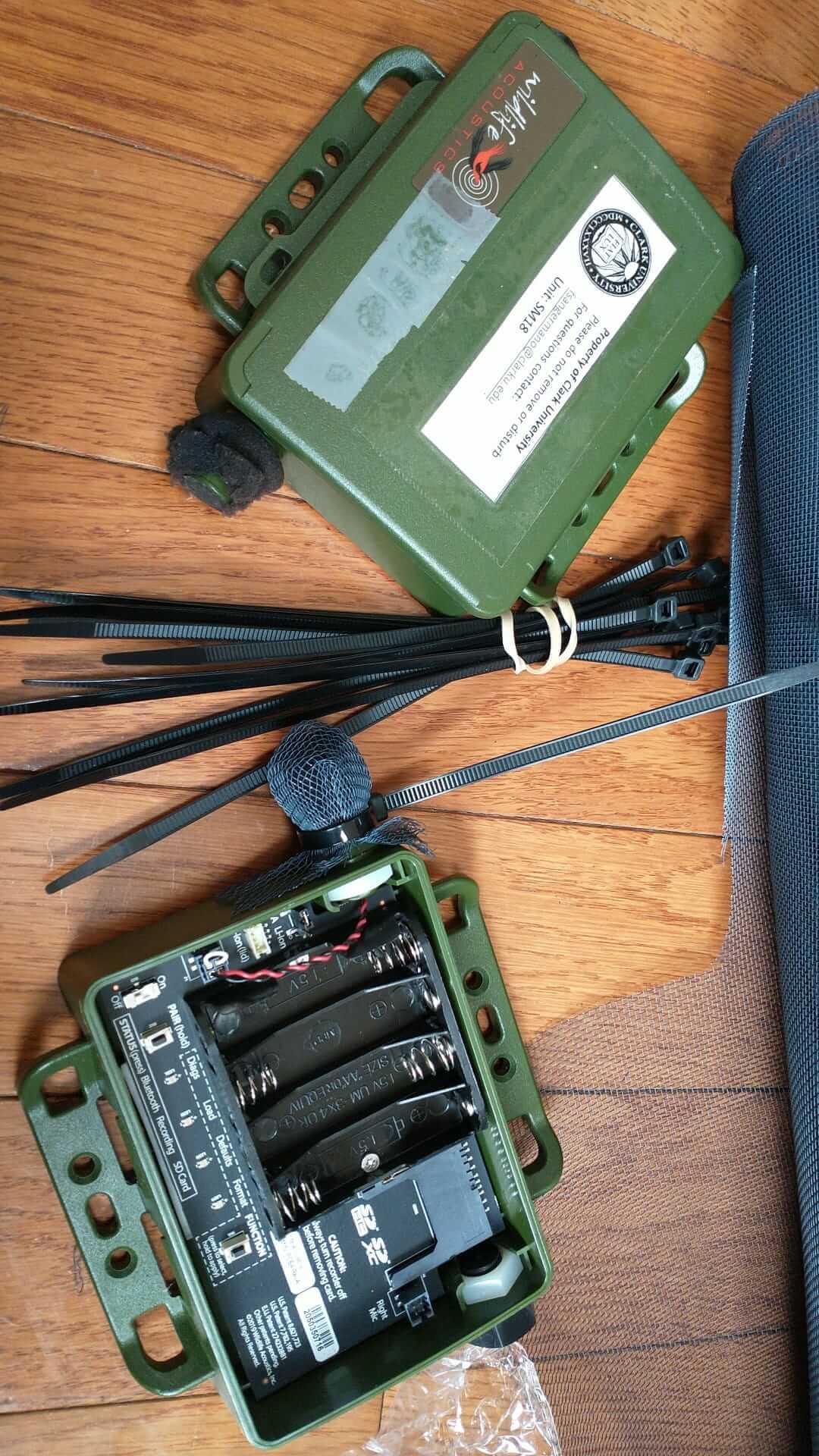
6 November 2023 9:31am
Hi - thanks for your reply. I've been thinking along the same lines though unsure where I'd purchase 'acoustic foam' from. I've made 'dead cats' before for some of my active monitoring mics and that material is not too difficult to source but the only acoustic foam I've come across is the type for deadening sound in studio etc. - the exact opposite of what I want!! The search continues ....!
6 November 2023 9:33am
Brilliant - thank you.! Great idea about the screen too - I'm replacing some of them monthly so may try that myself. Have you found any issues with the mesh generating any tones with wind?
Digital Signals Processing - free online textbook
31 October 2023 1:50pm
Searching for researchers working in Africa
25 September 2023 1:57am
20 October 2023 7:45pm
Hi Andrew,
Rainforest Connection (RFCx) has projects in a couple different countries in that region, and also working with agroforestry systems to monitor biodiversity using acoustic monitoring! You can read more about that project (Kenya) here: https://rfcx.org/blog/monitoring-biodiversity-in-kenyan-agroforestry-parcels. We've also got a project working with small-scale cacao farmers in Colombia to monitor biodiversity in their cacao plots. For some background, RFCx is a non-profit focused using sound and AI to monitor biodiversity and detect threats, and we also manage the Arbimon acoustic analysis platform.
I'd be happy to talk through ideas further if you'd like, feel free to reach out! carly@rfcx.org
All the best,
Carly
21 October 2023 12:13am
HI Andrew,
I am replying to the "elsewhere". I am based in Aus but travel and work in the Arts/ Science field of field recording, often with scientists. I have been acoustic monitoring a peri-urban site in Victoria with a local council. The subject is a wetland, transferring from farmland to a wetland public space that is now surrounded and impacted by urban infrastructure. I was lucky enough to get sounds before, during and after CoVid lockdowns so we can hear a stark comparison of anthropogenic sound.
I'd love to chat further about this and other work I do if this fits your collaboration criteria.
Best,
Vicki
31 October 2023 1:56am
Hi Vicki,
I've sent you a private message.
Ecoacoustic Bird Survey White Paper
30 October 2023 3:48pm
PAM workflow and file question
27 October 2023 3:50pm
29 October 2023 10:59am
Like this:
ffmpeg -i input.wav -f segment -segment_time 60 -c copy output%03d.wav
30 October 2023 1:17pm
Thank you!
30 October 2023 1:17pm
Thank you!
In case you missed it... (no.2)
27 October 2023 1:20pm













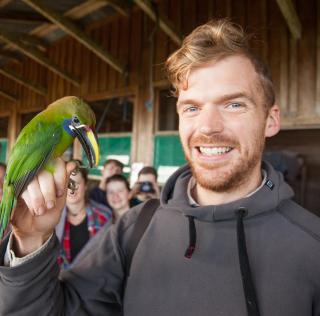























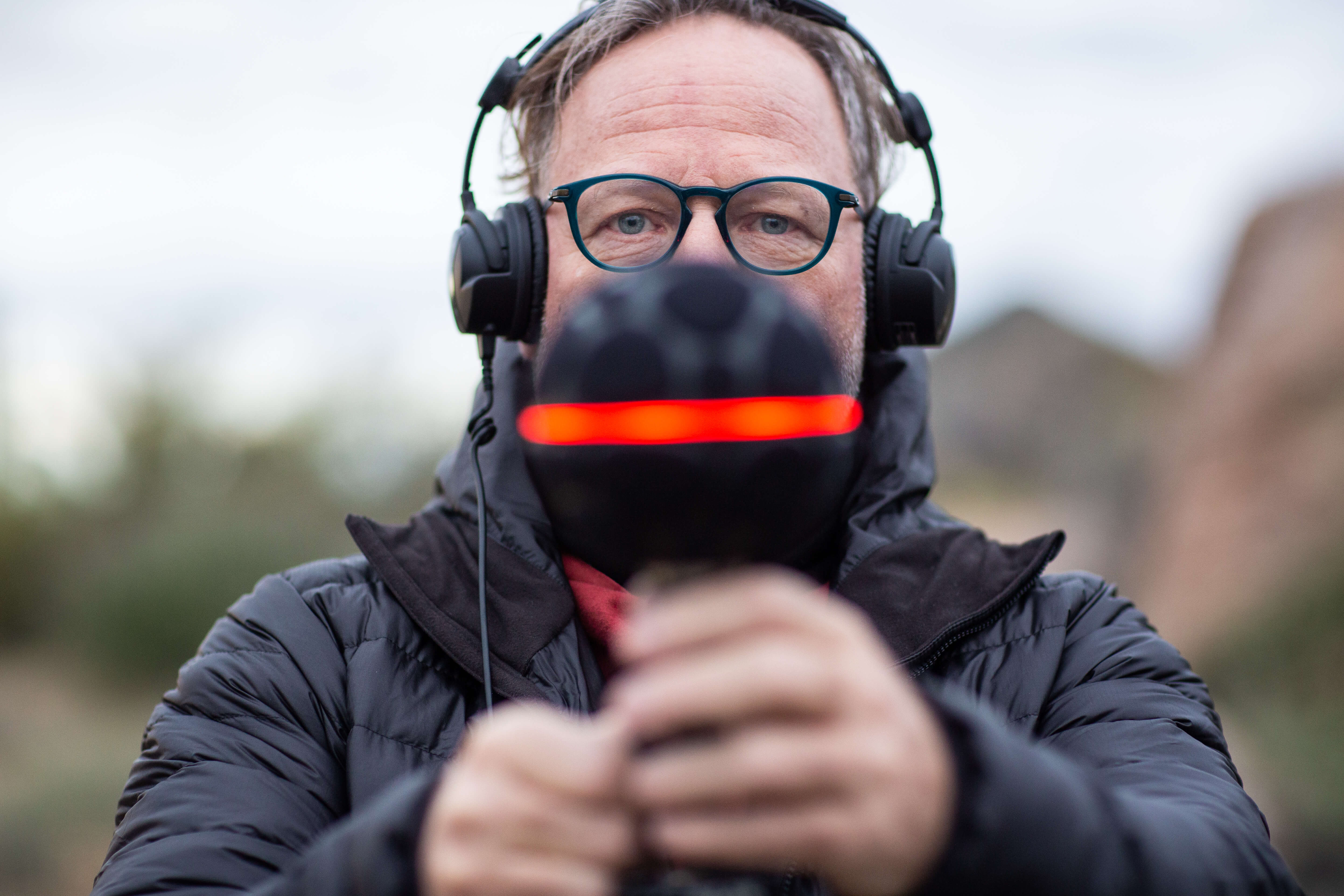






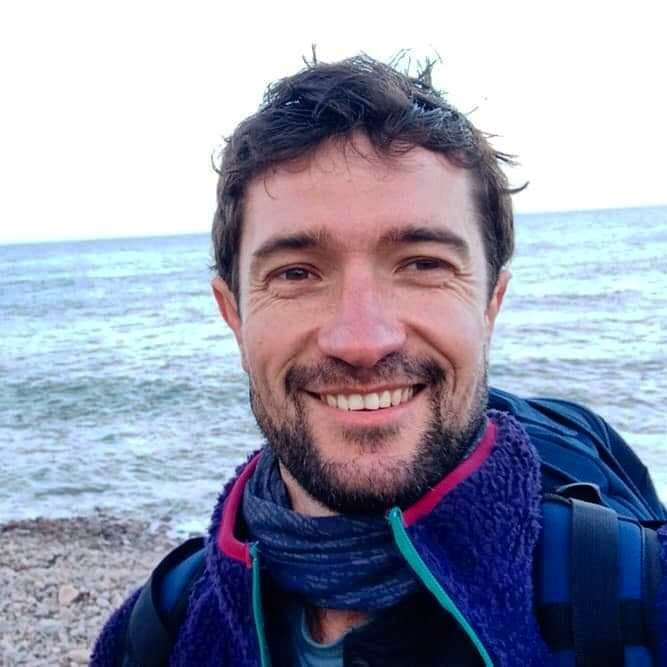



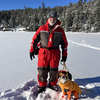










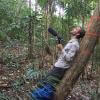



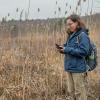




5 January 2024 11:07am
Hi Filippo,
Nice to read your message. Have you thought of contacting anyone in the Bioscience department at UCL? In our group "the People and Nature Lab", a few PhD students (Ben and Jason) are working on ML methods for coral reef monitoring. Might be interesting to reach out to them. List of People at CBER.
Best, Aude